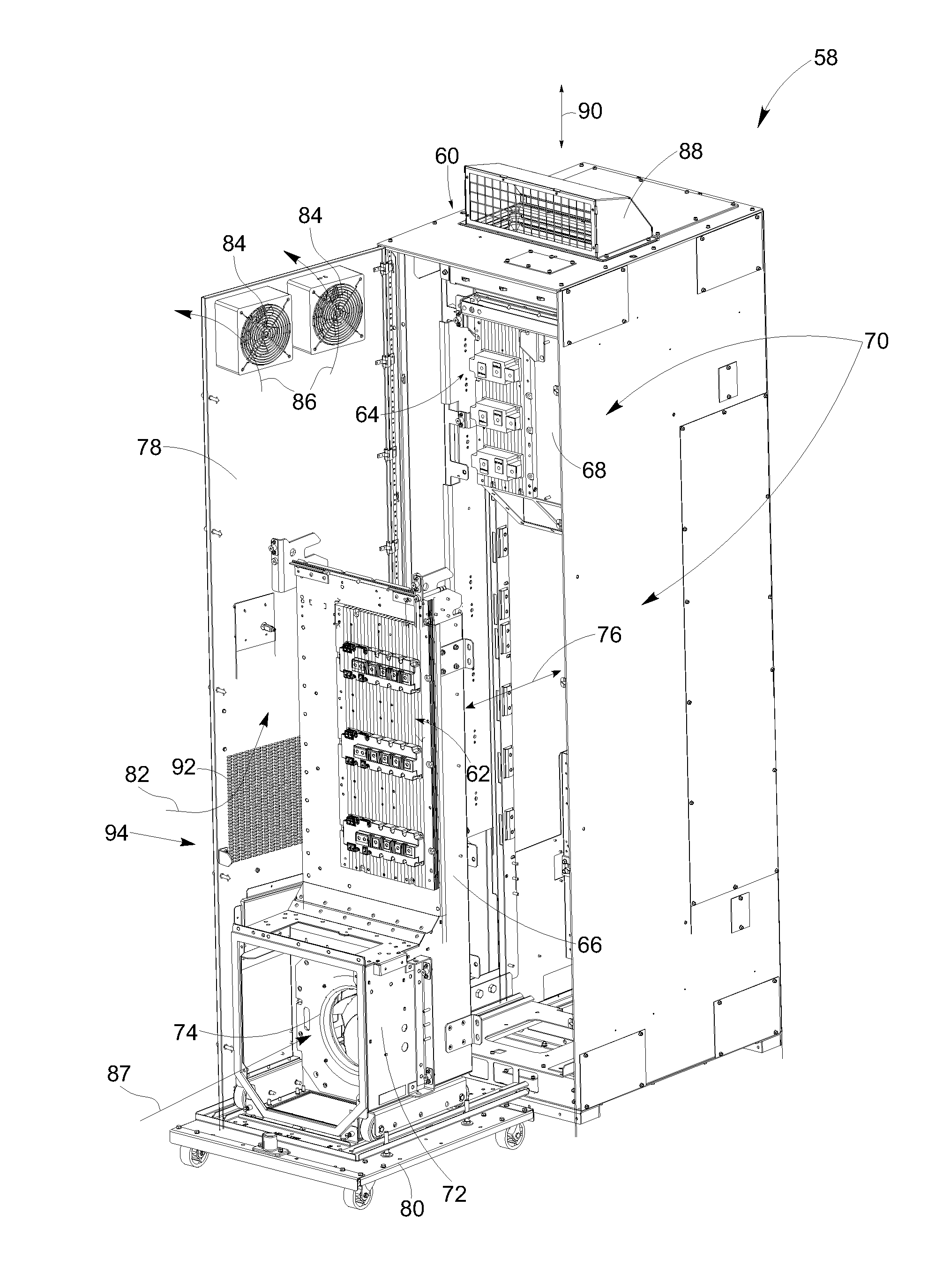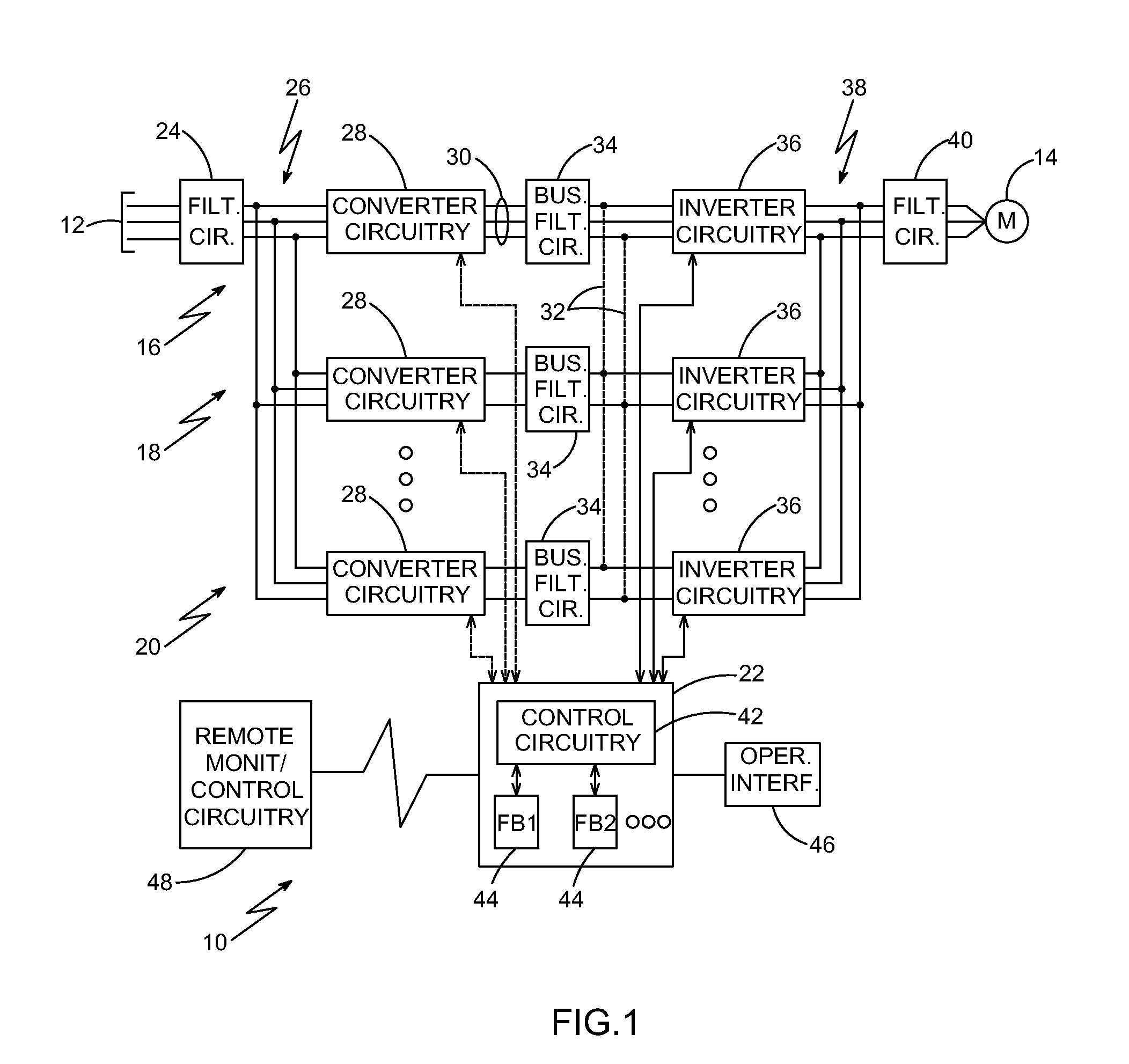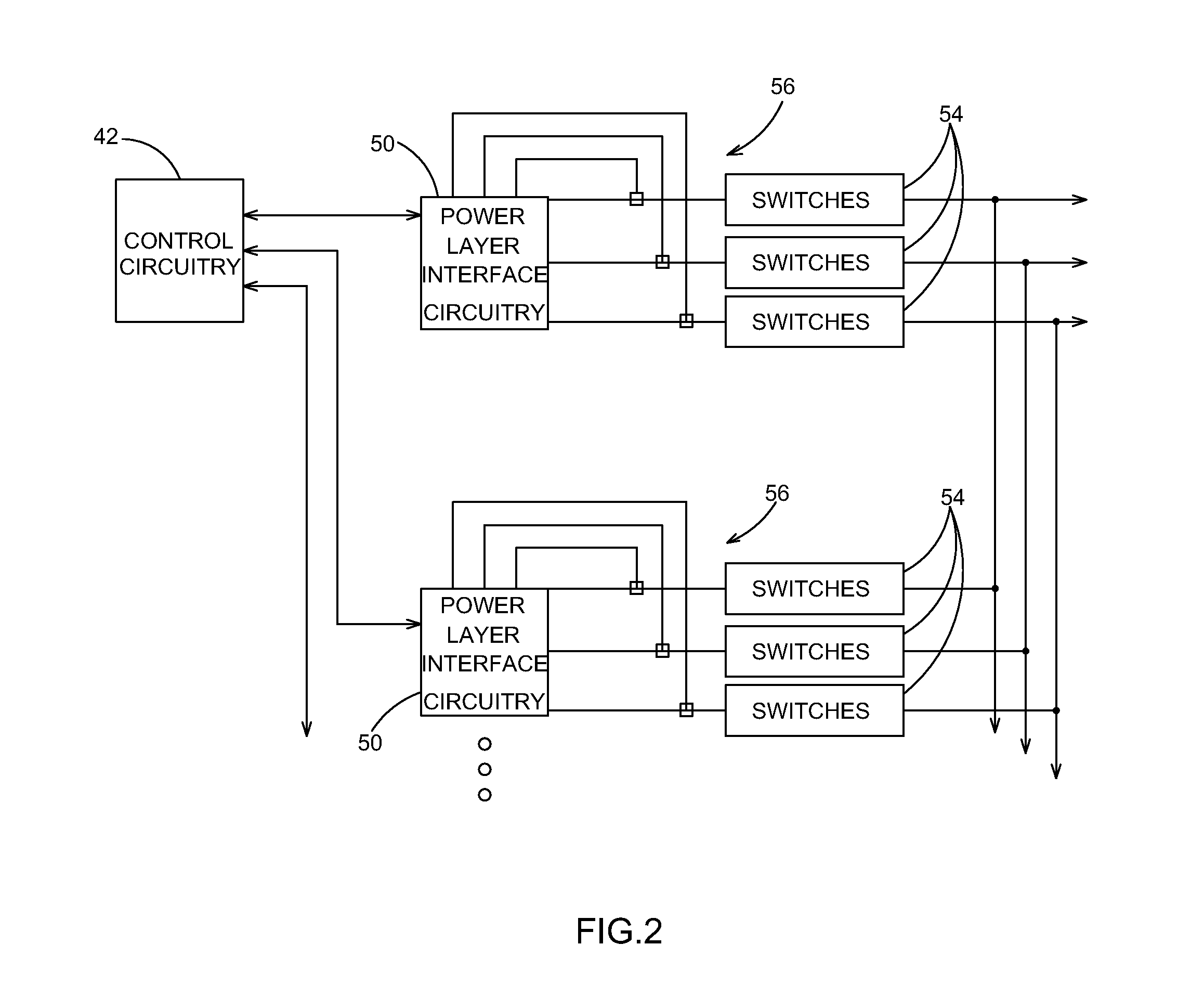Motor drive cooling duct system and method
- Summary
- Abstract
- Description
- Claims
- Application Information
AI Technical Summary
Benefits of technology
Problems solved by technology
Method used
Image
Examples
Embodiment Construction
[0024]Turning now to the drawings, FIG. 1 represents a drive system 10 in accordance with aspects of the present disclosure. The drive system 10 is configured to be coupled to a source of AC power, such as the power grid, as indicated by reference numeral 12, and to deliver conditioned power to a motor 14 or any other suitable load. The system 10 comprises a plurality of individual drives coupled to one another in parallel to provide power to the load. In the example illustrated in FIG. 1, for example, a first drive 16 is illustrated as coupled to a second drive 18 and a further drive 20 which may be the third, fourth, fifth, or any suitable terminally numbered drive. A presently contemplated embodiment may accommodate up to five parallel drives, although fewer or more may be configured in the same way. It should be noted that certain aspects of the techniques described herein may be used with a single drive. However, other aspects are particularly well-suited for multiple parallel ...
PUM
 Login to View More
Login to View More Abstract
Description
Claims
Application Information
 Login to View More
Login to View More - R&D
- Intellectual Property
- Life Sciences
- Materials
- Tech Scout
- Unparalleled Data Quality
- Higher Quality Content
- 60% Fewer Hallucinations
Browse by: Latest US Patents, China's latest patents, Technical Efficacy Thesaurus, Application Domain, Technology Topic, Popular Technical Reports.
© 2025 PatSnap. All rights reserved.Legal|Privacy policy|Modern Slavery Act Transparency Statement|Sitemap|About US| Contact US: help@patsnap.com



